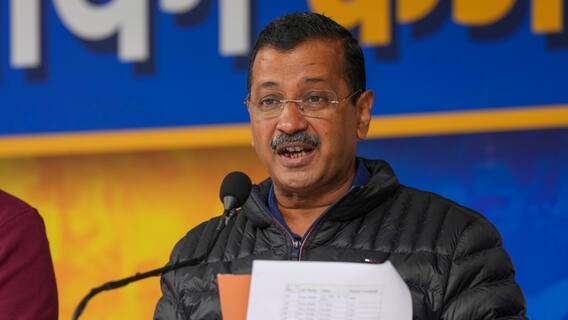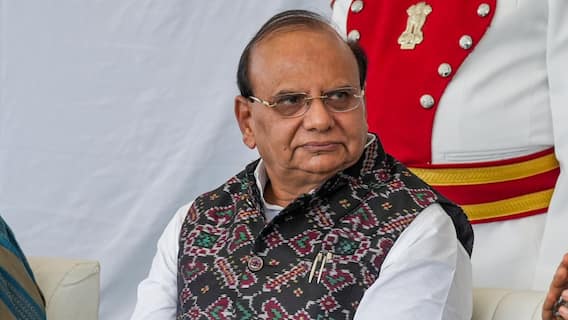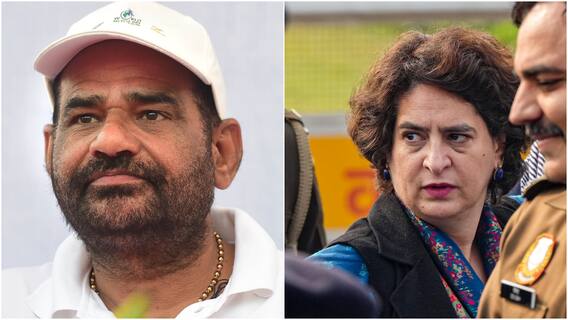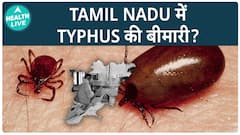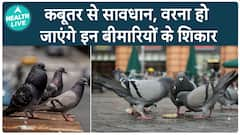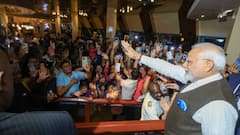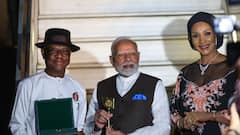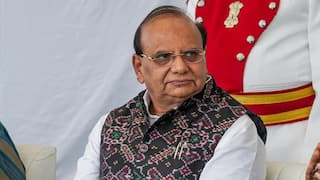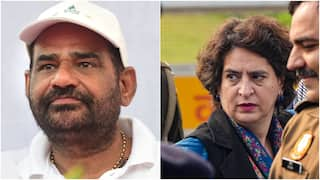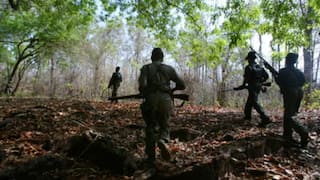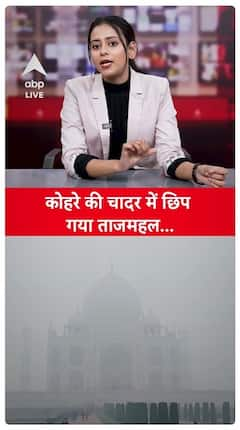Explorer
Advertisement
Coronavirus: US Toll At 3,899 Passes Grim 9/11 Mark, Prepares For Worst
After the top doctors dealing with the crisis displayed their statistical model for the pandemic's trajectory, President Donald Trump said at his briefing on Tuesday, "This is going to be a very painful, a very, very painful two weeks" when the COVID-19's toll reaches its peak.

Paramedics push a gurney with a patient to Brooklyn Hospital Center Emergency Room on March 31, 2020 in the Brooklyn borough of New York. (Photo by Angela Weiss / AFP)
New York: As the number of deaths from coronavirus passed the grim milestone of the toll of 9/11, the US stared at questions about its preparedness and the stark prospects of more than 100,000 people dying in the pandemic.
After the top doctors dealing with the crisis displayed their statistical model for the pandemic's trajectory, President Donald Trump said at his briefing on Tuesday, "This is going to be a very painful, a very, very painful two weeks" when the COVID-19's toll reaches its peak.
The number of deaths reached 3,899 on Tuesday night, exceeding the 2,977 toll of the terrorist attack on the US, the worst mass death in the US and a post-World War II benchmark for tragedies.
The number of confirmed cases in the US was 188,547.
New York City, the epicentre of the pandemic where 1,096 have died, gave a preview of how the situation could unfold: Outside some city hospitals that had run out of space in the morgue to store the bodies, freezer trucks were parked with bodies being brought out on forklifts. The New York Post quoted New York Funeral Directors Association official Mike Lanottes as saying that some cemeteries are finding it difficult to handle burials and a backlog could be developing.
The supply of personal protection equipment (PPE) for health professionals and first responders, sophisticated ventilators for patients and tests to determine who is affected dominates the response to the pandemic amid questions if there are enough in stock.
Trump and Vice President Mike Pence say there is adequate stock and more are on the way, but others question if the supply can meet the needs of the upcoming onslaught.
Democratic Speaker Nancy Pelosi criticised Trump for not preparing for the crisis.
She said on a TV programme that PPEs, ventilators and test kits are immediately needed.
She accused Trump of not fully using his powers under the Defence Production Act to compel companies to manufacture them. "It will save lives," she said.
New York Governor Andrew Cuomo said that the state needed 30,000 ventilators in the coming weeks but was receiving only 4,000 from the federal government.
He accused the Trump administration of setting up a competition among states and itself in bidding for equipment, raising the prices, instead of having a centralised purchase system.
Because of the de-industrialisation of the US under previous administration, the US is ironically dependent for a lot of the equipment and supplies on China, which is the source of the pandemic and is getting huge profits from it.
The US is now making auto manufacturers like Ford and General Motors to make the ventilators that cost about $25,000 each.
Trump said that some governors were exaggerating their needs.
Federal agencies and the military have been deploying hospital ships and rapidly setting up field hospitals around the country.
Anthony Fauci and Deborah Brix, the medical experts on the Coronavirus Task Force (CTF), said that the worst phase was two weeks ahead and displayed the models that showed the possibility of 100,000 to 240,000 people dying before the pandemic's end months away.
And that number was if the US followed the best procedures for controlling its spread.
If it did not follow the guidelines for social distancing, the projections show that the death toll could be as high as one million, according to the projections they presented.
With a choice between the economy and health, Trump has extended till April the guidelines for combating COVID-19 with social distancing that has led to the closing of businesses and Stay-at-Home orders at its core.
He called the extension "a matter of life and death, frankly."
The guidelines have to be enforced by state and local governments and not all of whom are doing it.
With 33 only states imposing semi-lockdown orders, one in three people in the US are covered by the Stay-at-Home rules that allow only essential services and shops to operate and limit the movement of individuals.
Trump said, "I want every American to be prepared for the hard days that lie ahead. We're going through a very tough few weeks."
Brix said that controlling the pandemic has "no magic therapy or vaccine," but depends on "behaviour" like staying indoors and following social distancing.
Trump has claimed that there are enough ventilators and more on the way
Fauci and Birx said that the Stay-at-Home orders and social distancing were showing effectiveness in slowing the spread of COVID-19.
The statistical models showed that Washington State, where COVID-19 first surfaced, and California, had shown less steep increases compared to New York, having imposed strict restrictions early.
Trump, who has been accused of downplaying the magnitude of the pandemic and not acting soon enough, was sombre on Tuesday delivering the warning about the oncoming tragedy.
Calling himself a "cheerleader for the country," he defended his earlier optimistic stance saying, "I want to be positive. I don't want to be negative. I'm a positive person."
Follow Breaking News on ABP Live for more latest stories and trending topics. Watch breaking news and top headlines online on ABP News LIVE TV
View More
Advertisement
Trending News
Advertisement
Advertisement
Top Headlines
Election 2024
Jobs
India
Cities
Advertisement


Sayantan Ghosh
Opinion






